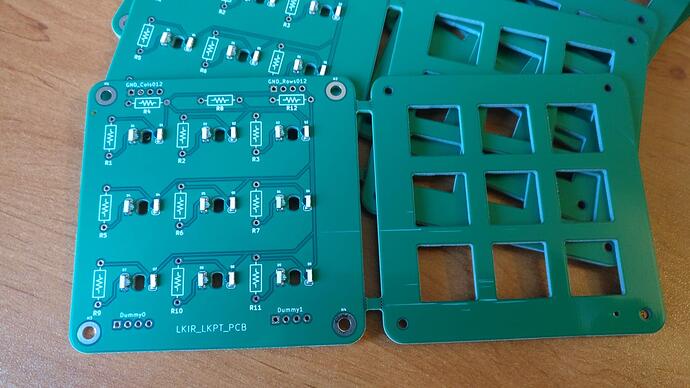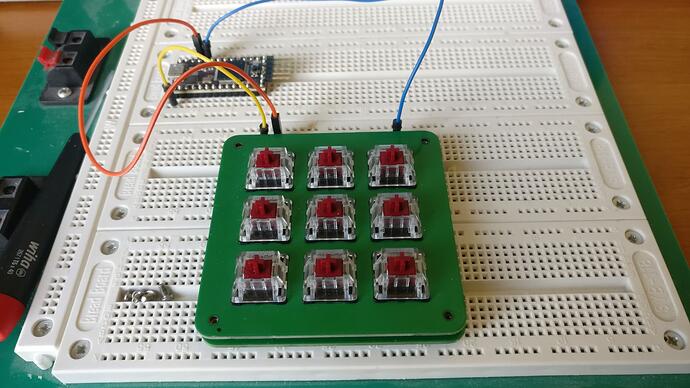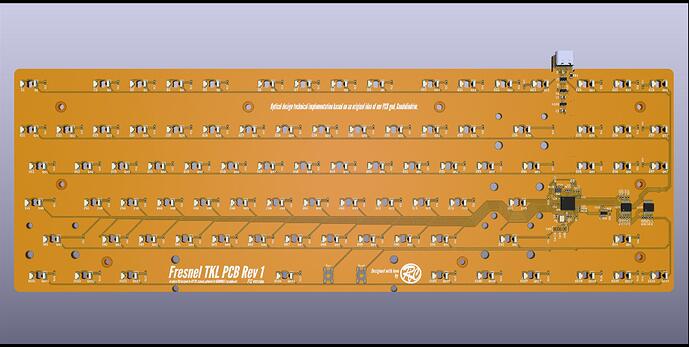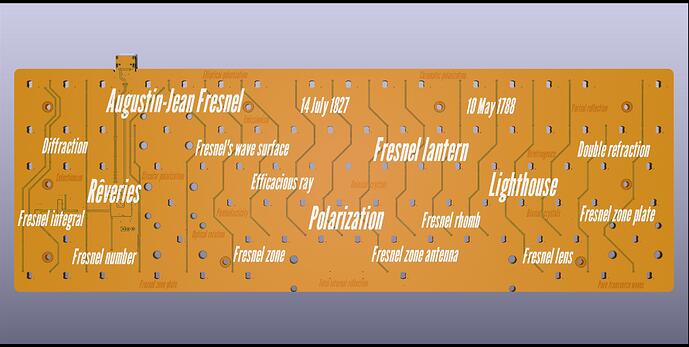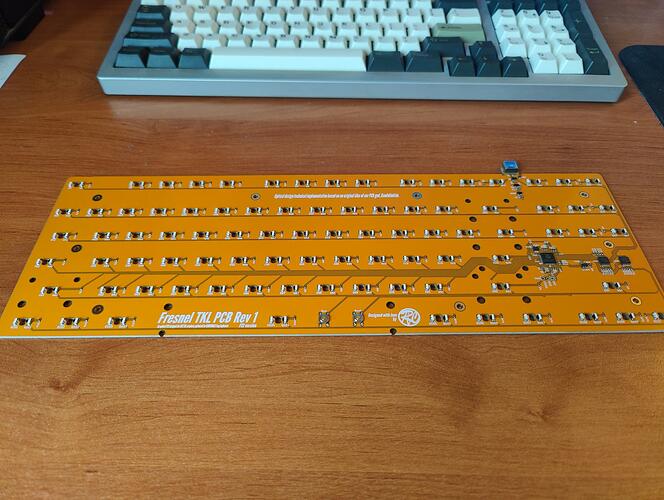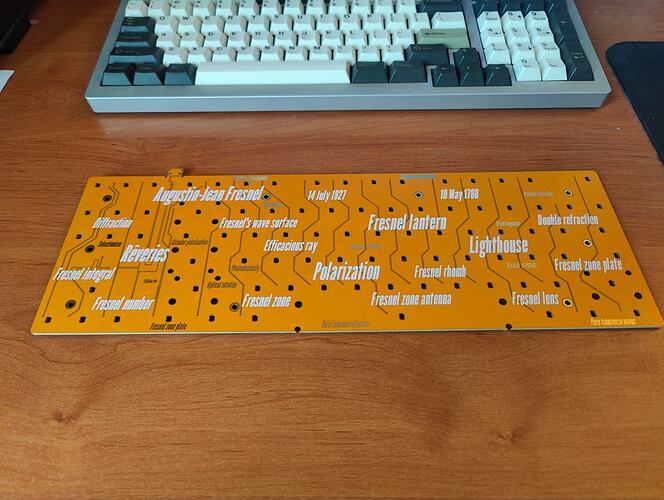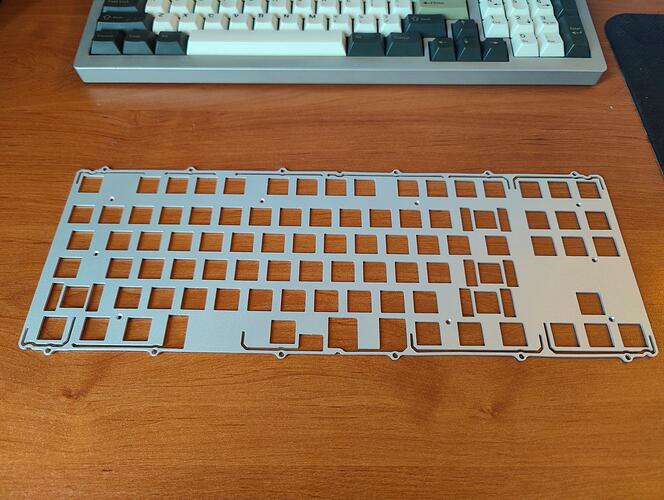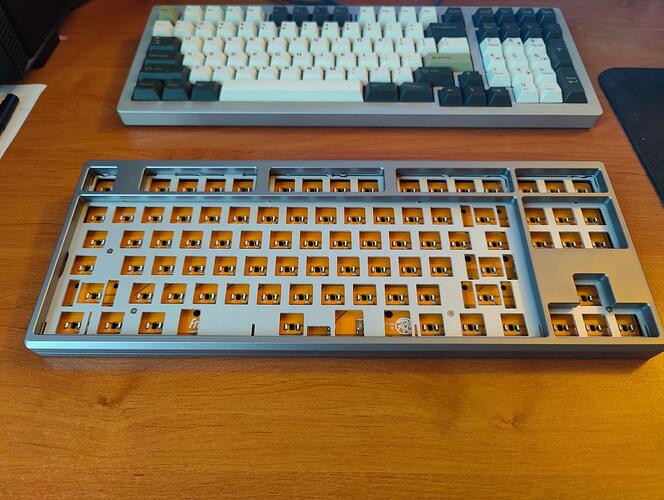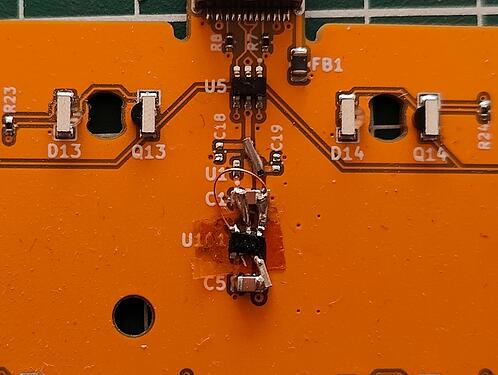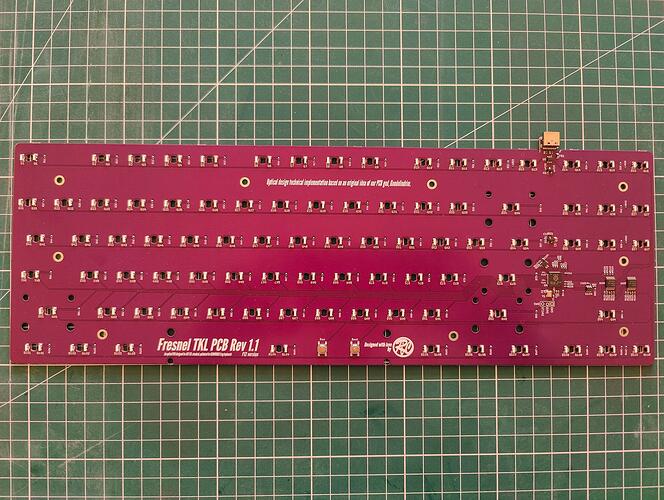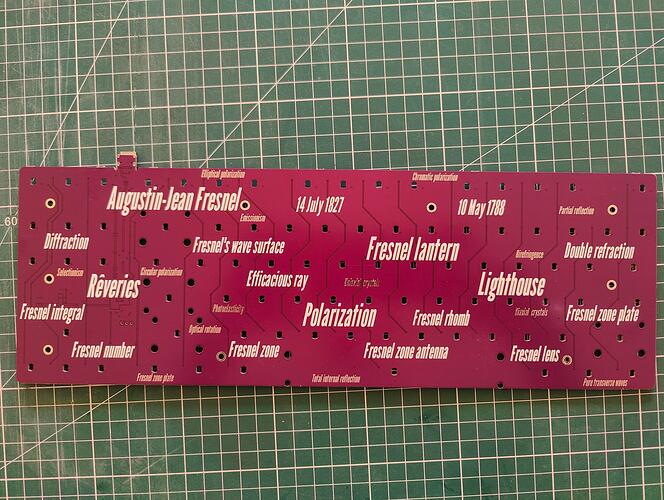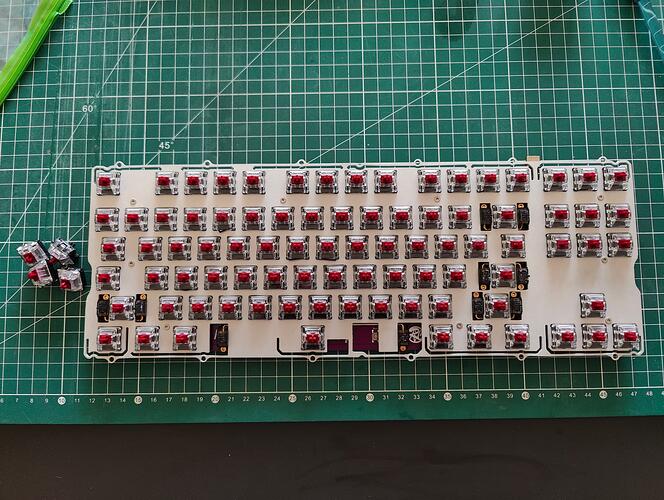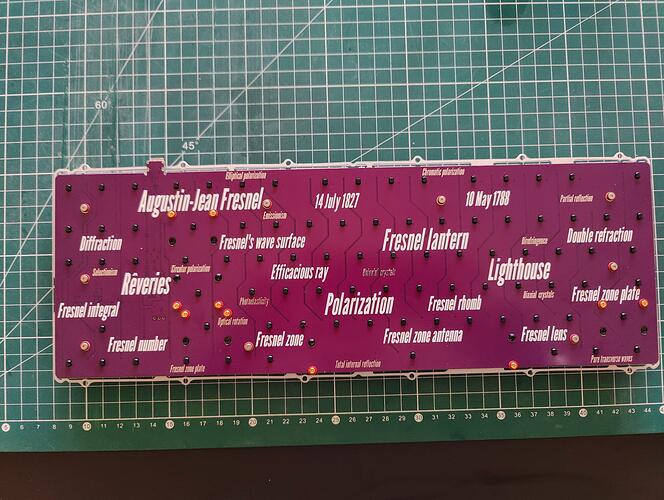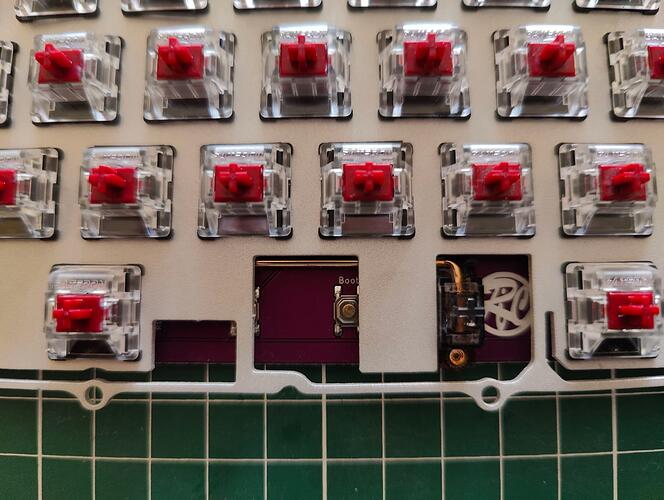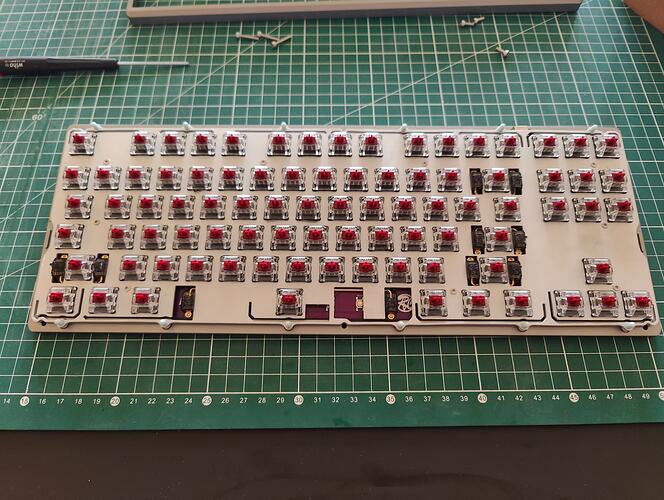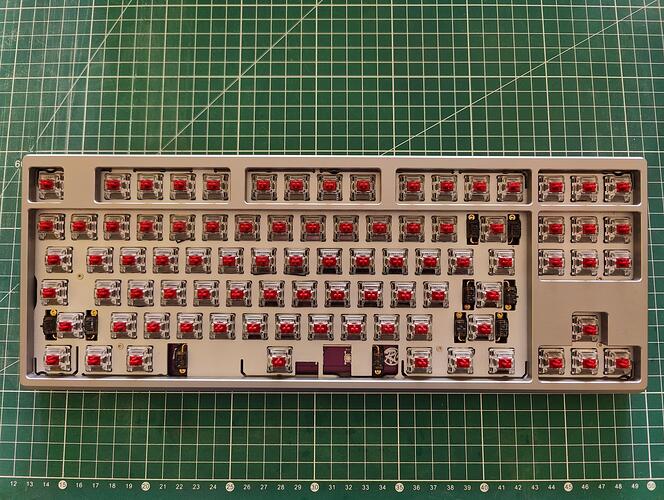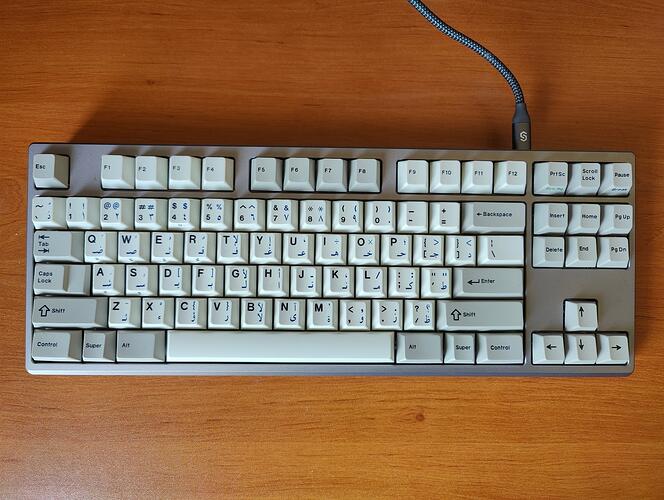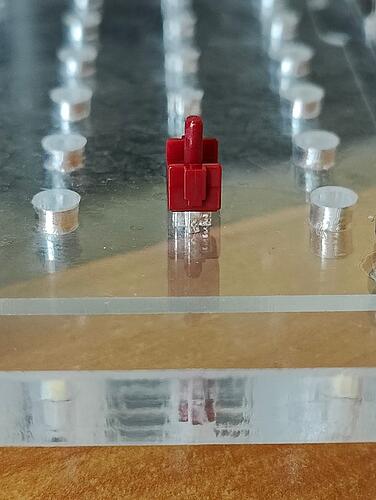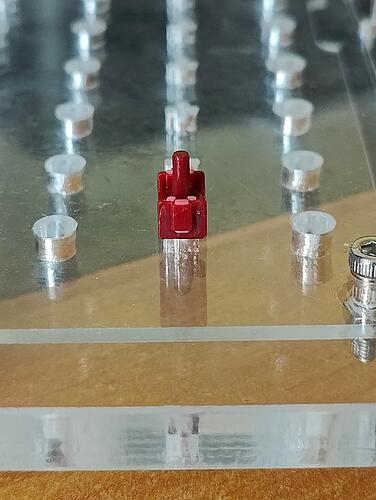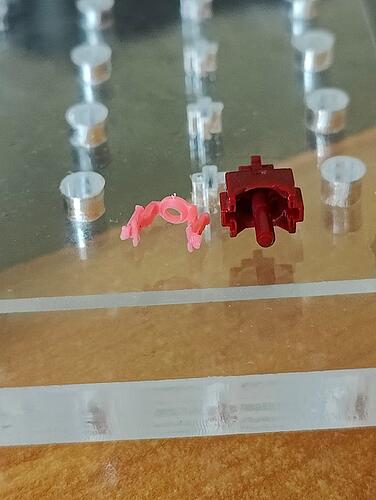Hello keyboard enjoyers !
Here is my new personal project, a PCB using optical switches that is planned to be installed on my Frog keyboard.
You may have seen an old topic related to optical switches research in this forum:
A lot of research have been since done and this time I was far from alone doing this.
Our master Gondolindrim has shown great interest in developping PCBs for optical switches and as a result the fundamentals of optical technique used in the PCB presented here is his own invention.
So if it works don’t forget to thank him later, if not then I most probably have made a mistake on my side ![]()
The first step has been to prototype something simple with all ideas in mind to battle proof it.
A simple macropad has been designed with a maximum of through hole components for ease of experimentation:
A few units have been sent to Gondo for him to do testing and write a QMK firmware. He did that live on Twitch and after a few hours he could have a working QMK firmware.
The prototype was far from perfect though, the latencies were quite terrible unless we used quite a lot of current.
As we wanted fast polling rate and not use too much current, something smart had to be done and Gondolindrim found the magic trick to do ![]()
So what you’ll see below is using the magic trick found by him, with only minor tweaks on my side (that he is curious to see if they work as intended).
The name of the project comes from a French scientist that did many optical breakthroughs in the past (you may have heard of the Fresnel lenses).
The PCB will come in yellow, color of the sun ![]()
I do not plan to open source this design as the original idea is not mine.
Also Gondolindrim is looking at this technology seriously and I don’t want to interfere with his own projects.
But I am sure that if all this works he will be more than happy to share the technique with anyone and document it.
The PCBs are already ordered, and I am eagerly waiting for them ![]()
See you !
